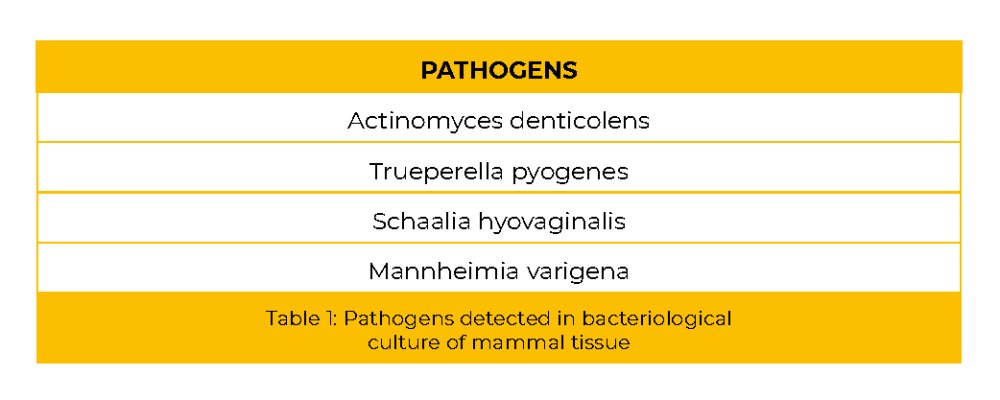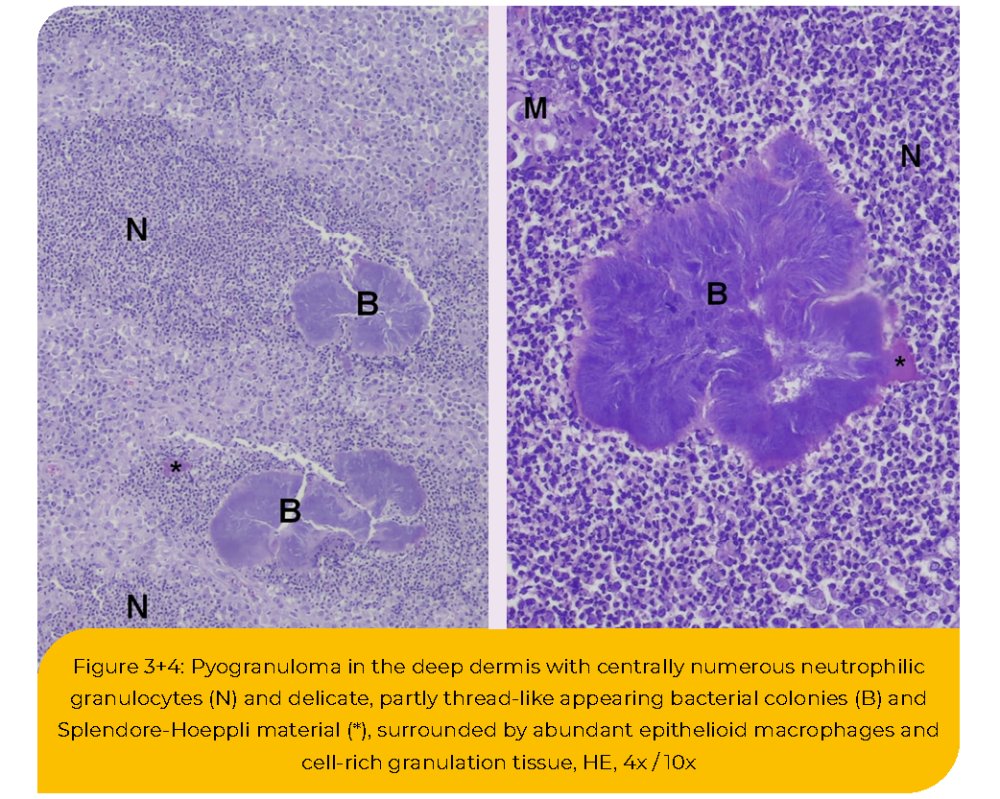CASE REPORT - Severe actinomycosis in organic free-range sows
Background and Objective
Actinomycosis, a rare but persistent disease in pig farming, particularly affects free-range sows. Historically linked primarily to Actinomyces suis, recent findings indicate that other species, such as Actinomyces denticolens and Actinomyces suimastitidis, also contribute to granulomatous mastitis. This case report involves sows from an organic free-range farm in Germany, where some animals developed severe mastitis after weaning, attributed to warm, humid conditions and the use of straw bedding.



Material and Methods
The case involved three sows from a free-range organic farm with 192 sows and extensive piglet-rearing facilities. The farm adheres in accordance with Regulation (EU) 2018/848 on organic production, using straw bedding and practicing vaccination protocols but without routine antibiotics. Necropsy was performed on affected sows, revealing extensive mastitis. Tissue samples underwent bacteriological analysis, conducted in the laboratory of SAN Group Biotech Germany GmbH, Hoeltinghausen, Germany. A histopathological examination was conducted at the IVD GmbH, Seelze-Letter, Germany.
Results
Necropsy findings indicated severe mastitis characterized by ulcerated pyogranulomatous dermatitis and extensive connective tissue proliferation. Histological analysis revealed pyogranulomas, Splendore-Hoeppli material, and bacterial colonies. Bacteriological cultures identified various Actinomyces species and related bacteria, including Schaalia hyovaginalis and Trueperella pyogenes. These results confirmed actinomycosis as the primary cause of lesions, consistent with previous reports on this condition.

Discussion and Conclusion
Actinomycosis remains a significant challenge in free-range pig farming, exacerbated by factors like straw bedding and outdoor housing. Treatment options are limited, with surgical intervention being labor-intensive and economically burdensome. Preventive measures, such as piglet tooth grinding and herd-specific vaccines, may help reduce infection rates. In cases of actinomycosis, it is essential to culturally screen for Actinomyces denticolens, in addition to other present actinomycetes such as Trueperella pyogenes and Schaalia hyovaginalis. Enhanced research efforts are crucial to developing effective treatments and prevention strategies, ensuring better animal welfare and minimizing antibiotic use. In this case, an autogenous vaccination was implemented improved the clinical situation and significantly reduced the rate of new infections.
Let’s talk solutions and connect with our corresponding author: marius.beumer@san-group.com
Credits:
M. Beumer1, K. Freitag2, I. Spiekermeier1 , J. Buch1 , J. Reinmold1
1 SAN Group Biotech Germany GmbH, Muehlenstraße 13, 49685 Hoeltinghausen, Germany
2 Veterinary Practice Dr. Kerstin Freitag, Von-Haxthausen-Straße 14, 32683 Barntrup, Germany
SAN Group Biotech Germany GmbH I Mühlenstraße 13. I 49685 Höltinghausen GERMANY I +49 4473 9438 0 I office-de@san-group.com
Contact:
Contact us using the following form.

